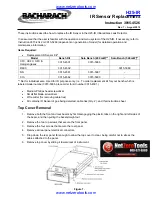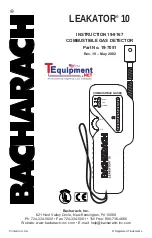
9
determine which kind of metal the target is.
Slowly rotate the DISC control clockwise away from ALL METAL until the unit
does not sound or sounds short tone. You can identify what kind of metal is
detected according to the setting position of DISC.
Here is a quick reference for some typical settings so you know what kind of
metal is rejected depending on the DISC setting. (This may vary based on
soil type, sand, or mineral content of the ground.
Setting of DISC
Metal Rejected.
Near 11:00
Iron
Near 12:00
Nickel coin(5¢), pull tab
Near 13:00
Zinc coin(1¢ 87 version)
Near 15:00
Copper coin (1¢ 76 version)
When the DISC control is set to the clockwise end most of metal is rejected,
except silver(25¢,50¢ and 1$).
Note:
The above chart is only a reference, actual result may be different.
Factors That Affect The Detecting
It’s difficult to have an accurate detecting result. It needs practice to get
better detection results. Sometimes the detecting may be restricted by some
factors.
If there are interference from other instruments or electrical cable or TV
or radio in your searching area, lower the sensitivity, or to change the
current searching area.
When searching in highly mineralized area, the unit will sound even if
there’s no metal. In this case, you can lower the sensitivity and increase
the height between the search coil and the ground until the false signal
disappears. If necessary, reset the DISC.
When searching in trash area, it’s better to set the DISC to 11:00
position, so that the unit can notch most of invaluable metals such as
nails and small iron trash.






























